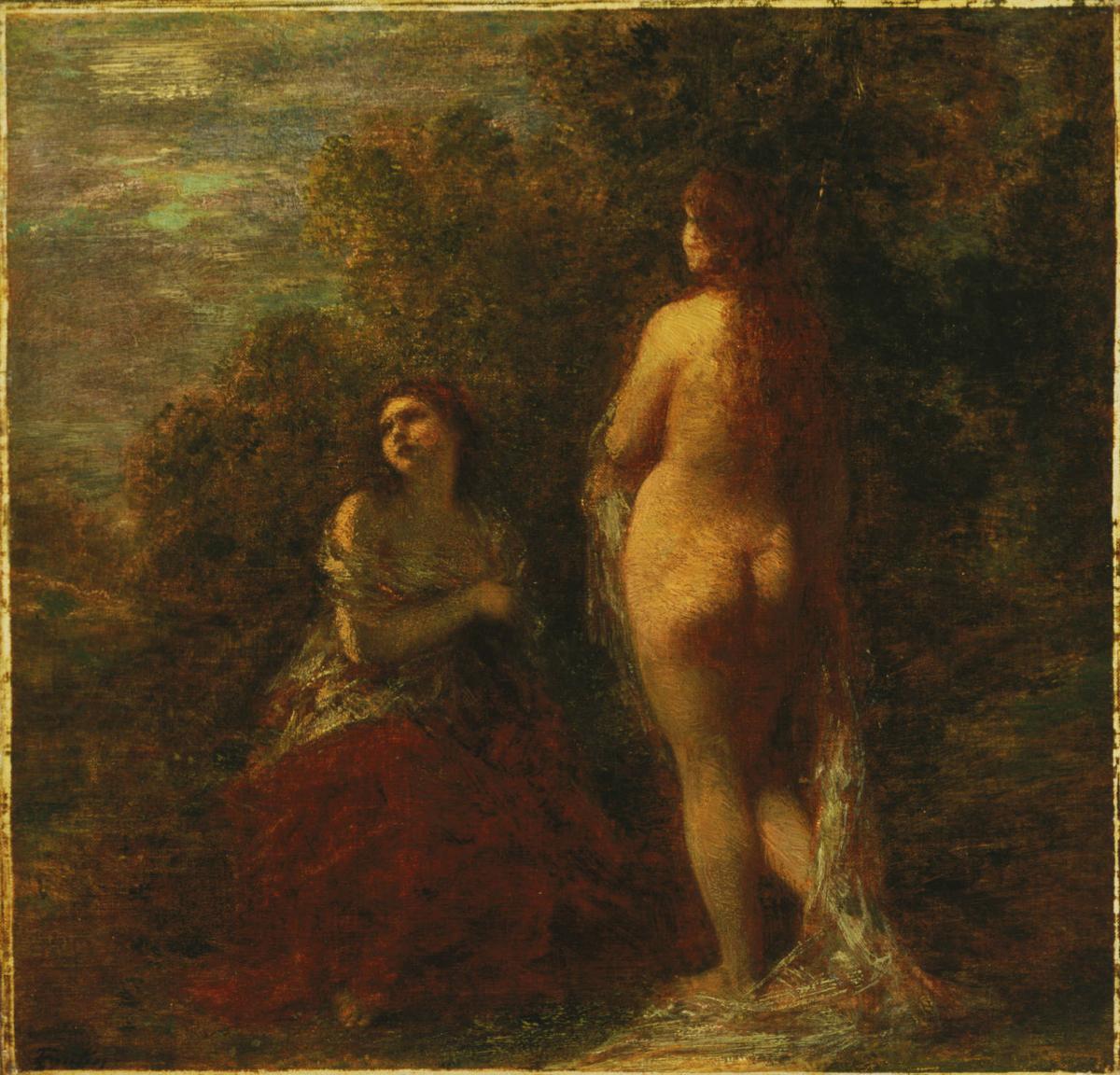Dawn
Henri Fantin-Latour ( c. 1883 )

The subject of the bather formed an important category within Henri Fantin-Latour’s oeuvre. That he was well aware of the importance of this theme stretching back to the Renaissance is borne out by his copies, including one after François Boucher’s Bath of Diana, 1742, in the Louvre. Many of his original compositions have definite mythological and even musical references. While many such paintings were given the title “Bathers” as a generic term, Fantin’s ability to create a hazy, poetic mood prompted Duncan Phillips to assign this painting the allegorical title Dawn.
Two voluptuous women are posed near a source of water, on the right, and against a wooded background. The seated figure is fully draped; her gaze is fixed into the distance, away from the viewer. The second woman, seen from behind, is nude, although partly covered by a white veil that she holds in front of her and that cascades to the ground, providing a counterbalance to the inclination of her body. Her gaze draws the viewer’s attention to the patch of early morning sky on the left. Fantin created a scene of languorous sensuality in which the figures are in unity with nature, as suggested by the similarity of the flesh tones of the standing figure to the roseate sky.
Such romantic woodland scenes with bathers differ markedly from the images of modern vacationers at resorts favored by Fantin’s contemporaries Renoir and Monet. At the same time, Fantin’s dream-like treatment of the theme diverges from his own more precisely rendered still lifes and group portraits. Reflecting on the artist’s seemingly contradictory tendencies, realistic and imaginary, Duncan Phillips noted: “Both in lithography and painting he adapted his technique to his subject according to whether he conceived of it in terms of a pellucid and precise prose, or of a mellifluous and meditative music.” In Dawn the adoption of this second manner results in the soft atmosphere and diffuse definition of forms, enhancing the sense of poetic reverie and leading the viewer into a timeless spiritual realm.